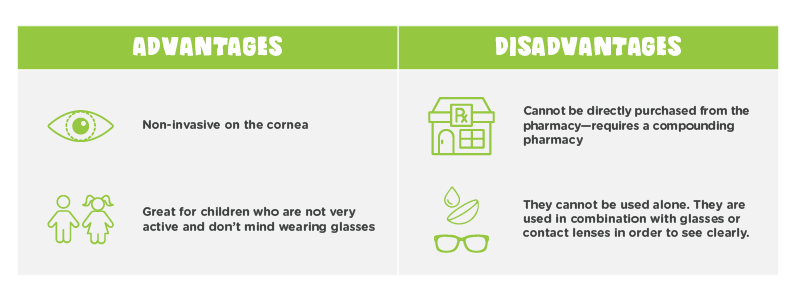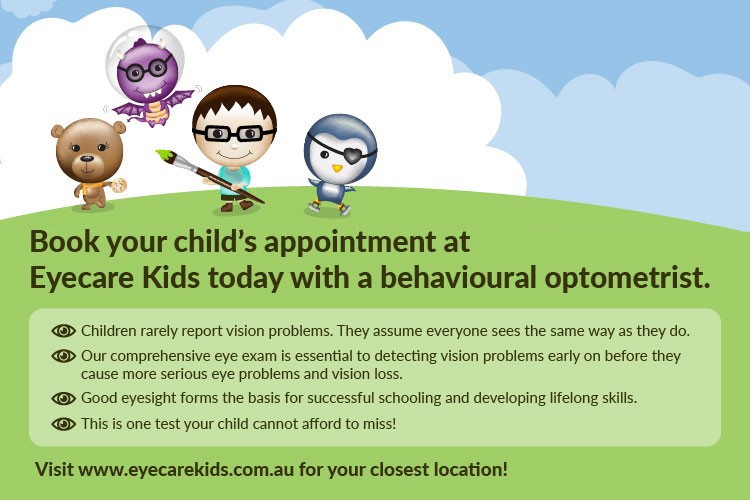Low-dose atropine eye drops are one of the myopia control treatment methods we use at Eyecare Kids in combination with spectacles or contact lenses during the day.
Atropine is a compound derived from plants and is used in medicine mainly as a muscle relaxant. In optometry and ophthalmology, atropine is routinely used to widen (dilate) the pupils during eye exams.
Mechanism of action
Normally, our pupils will constrict (become narrow) when hit by light. Adding atropine in high doses (>1%) will cause the muscles in the eye to become relaxed. This dilates the pupil so that it will not respond to light and will temporarily cause blurred vision until its effects wear out, long enough for an eyecare professional to have a better view of the eye.
Low-dose atropine for myopia control
Whilst higher doses of atropine can cause blurred vision, lower doses (0.01% to 0.05%) have been shown to have minimal effects on reading vision, making them more attractive options to prescribe for myopia control. Myopia develops when the eye elongates, which causes light to focus in front of the retina rather than directly on it. LAMP studies (low-concentration atropine for myopia progression) showed low-dose atropine slowed eye growth by about 30% to 50%, depending on dosage, making it an effective treatment to slow down progression.
This method of myopia control is also very simple to use: Just place one drop in each eye before bedtime each night—that’s it!

Is low-dose atropine the ideal treatment for my child with myopia?
There are treatments that are currently available for slowing the progression of myopia. To know which treatment (or combination of treatments) is ideal for your child, we advise that you seek your local eyecare professional for this matter to obtain a most recent comprehensive eye test, discuss each treatment option and talk about your child’s lifestyle, preference, hygiene habits, and other factors that need to be considered before deciding on the most suitable treatment plan. If it has been more than a year since your child’s last comprehensive eye test, we recommend that this be checked as soon as possible.

